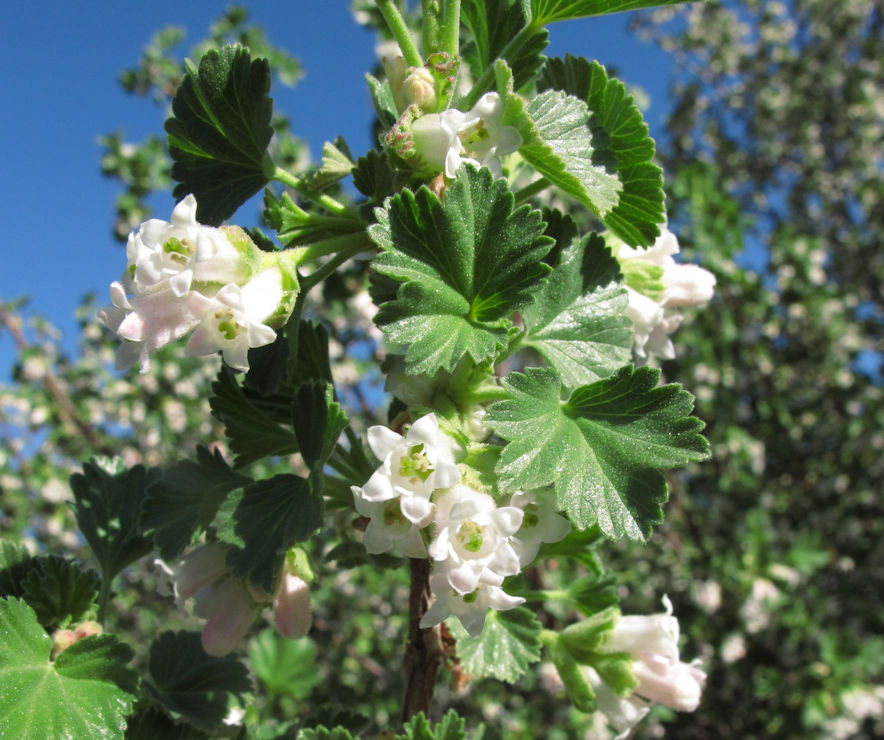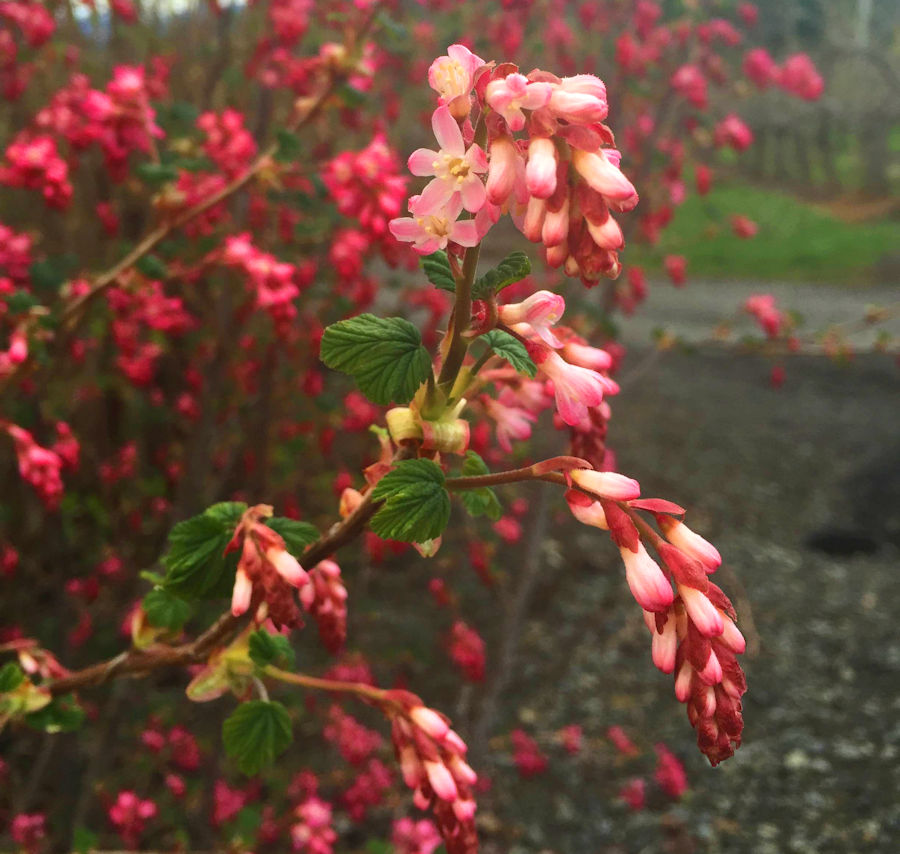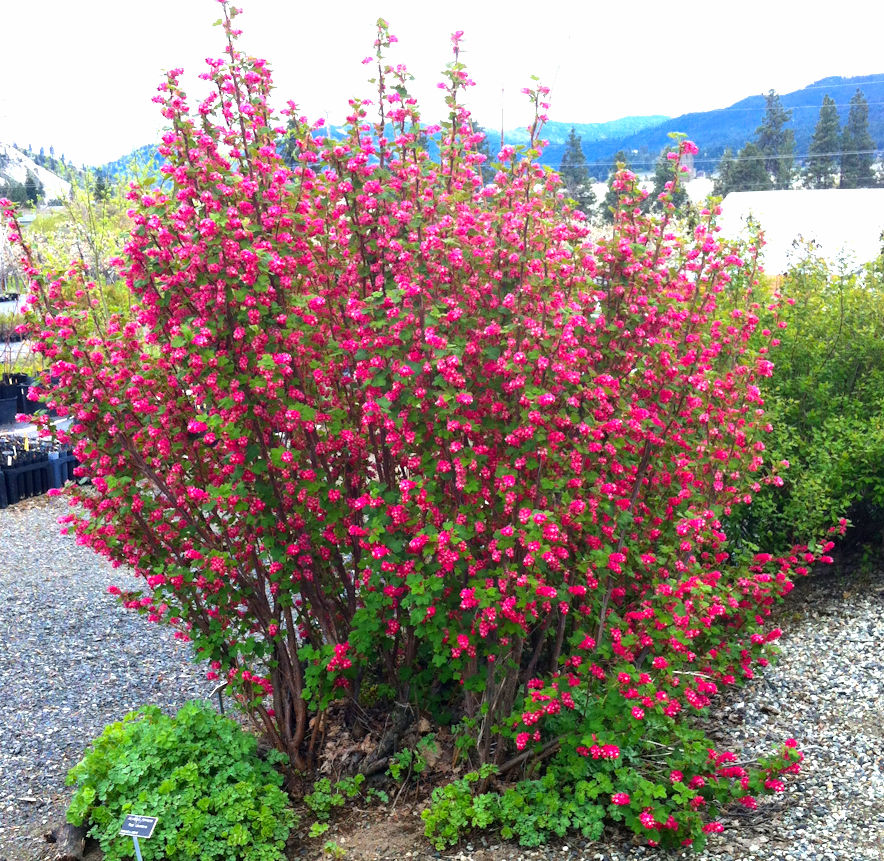Red-flowering Currant
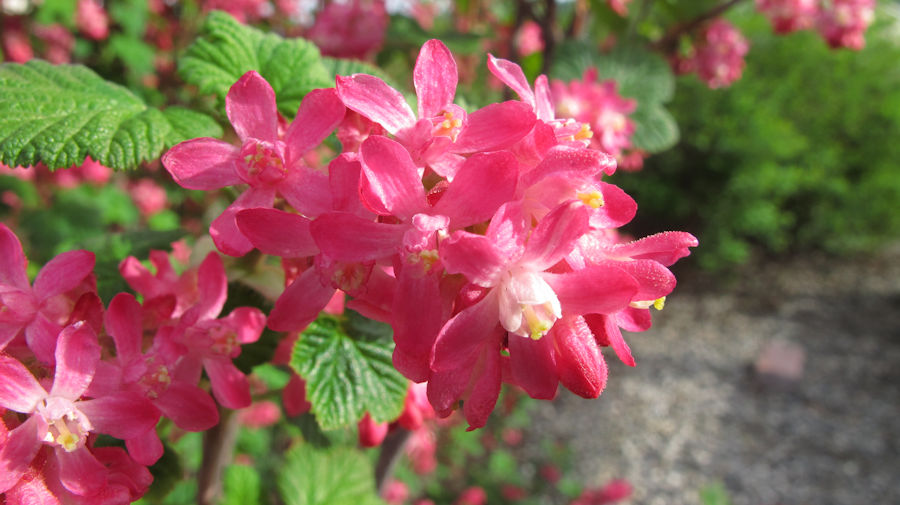
It happens every year. As soon as the red-flowering currant (Ribes sanguineum) blooms in the nursery there is a rufous hummingbird on it. I saw my first male hummer of the spring on Saturday, checking out the spot where the feeder at home hangs each year, making me realize that this little guy was here last year and made a trip to Central America and back since last I saw him! The next day there were two of these hummers visiting the newly opened blossoms in the nursery.
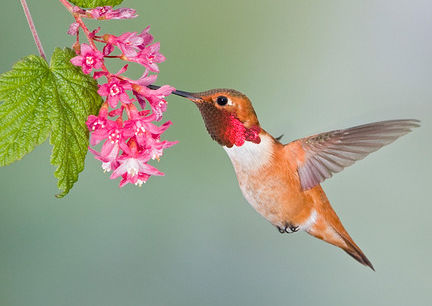
The red-flowering currant is the second native shrub to bloom at Derby Canyon Natives each spring, if you don’t count the Scouler’s willow (Salix scouleriana) catkins that were open a couple weeks earlier. First place in the flower category goes to its cousin, the wax currant (Ribes cereum). Red-flowering currant is more widely found west of the Cascades in Washington with a population extending from southern British Columbia well into California. Scattered plants are found in Chelan and Okanogan counties; heading east it appears again in the Idaho panhandle and the Blue Mountains. I collect my seed from plants above 2000′ elevation in the forest between Peshastin and Leavenworth.
Wax currant (Ribes cereum), the first shrub to bloom
This very attractive shrub was seen and collected by the Scottish plant explorer David Douglas when he traveled through the Northwest in the 1820’s. Plants grown from the seed he sent to Britain quickly became quite popular, and cultivars in various shades of red, pink and white were soon developed. It is a treat for me to encounter its showy red flowers in the April woods where, in our area, there rarely seem to be more than one or two plants together.
One limb on the volunteer currant in our parking area sports pale pink flowers
Red-flowering currant is moderately sized compared with many of our native shrubs, typically growing 5-6′ tall in this area, with attractive foliage and small crops of blue-black berries.It’s not the easiest shrub to grow, requiring well-drained soil and protection from drying winds and too much sun, but get it in the right spot and it will reward you. I have had one volunteer pop up in the gravel at the edge of my parking area, probably from a seed pooped out by a bird resting in the mock orange that grows there. This specimen has an even showier floral display than my original plant and when it blooms I quickly sell out of my larger, blooming examples. I must grow more!
Six feet tall and six feet wide, and ten years old

